Abstract
Of the 231 laboratories carrying out sputum cytology in England and Wales, information on the staffing, laboratory procedures, workload, records, and results for the year 1971 was obtained from 228 (98.7%) by means of a questionnaire, which was completed in 1973 in 81% of the laboratories and at the end of 1972 in the remainder. At the time the questionnaire was completed, the number of laboratories per region offering a service ranged from 6 to 25. Most of the processing of specimens was done by technicians and non-medical screeners (technicians without recognized qualifications) and most of the microscopy by pathologists and technicians. Papanicolaou and/or haematoxylin and eosin stains were used in 97% of the laboratories. During 1971, the number of specimens tested per laboratory ranged from 9 to 6000. A median of 381 specimens and 165 patients were tested per laboratory. Almost all specimens were submitted by hospitals and chest clinics and only 1% by general practitioners. An estimated median of 6.5% of all cytological specimens were sputum, most of the remainder being cervical smears. Laboratories varied greatly in their positive (0%-24%) and doubtful positive (0%-27%) rates. An estimated 63 000 patients had their sputum tested in 1971, and about 6300 had positive reports, rather less than one-quarter of all patients diagnosed as having lung cancer in England and Wales in 1971. The cost of the service was estimated to be of the order of pound375 000 at 1974 prices; that is, pound2.50 per specimen or pound6.00 per patient tested. An improved service might best be provided by district general hospital laboratories testing at least 1000 specimens per year so that a high level of accuracy in reporting could be assurred. A large proportion of the microscopy might be done by non-medical graduates and technicians under the supervision of pathologists.
Full text
PDF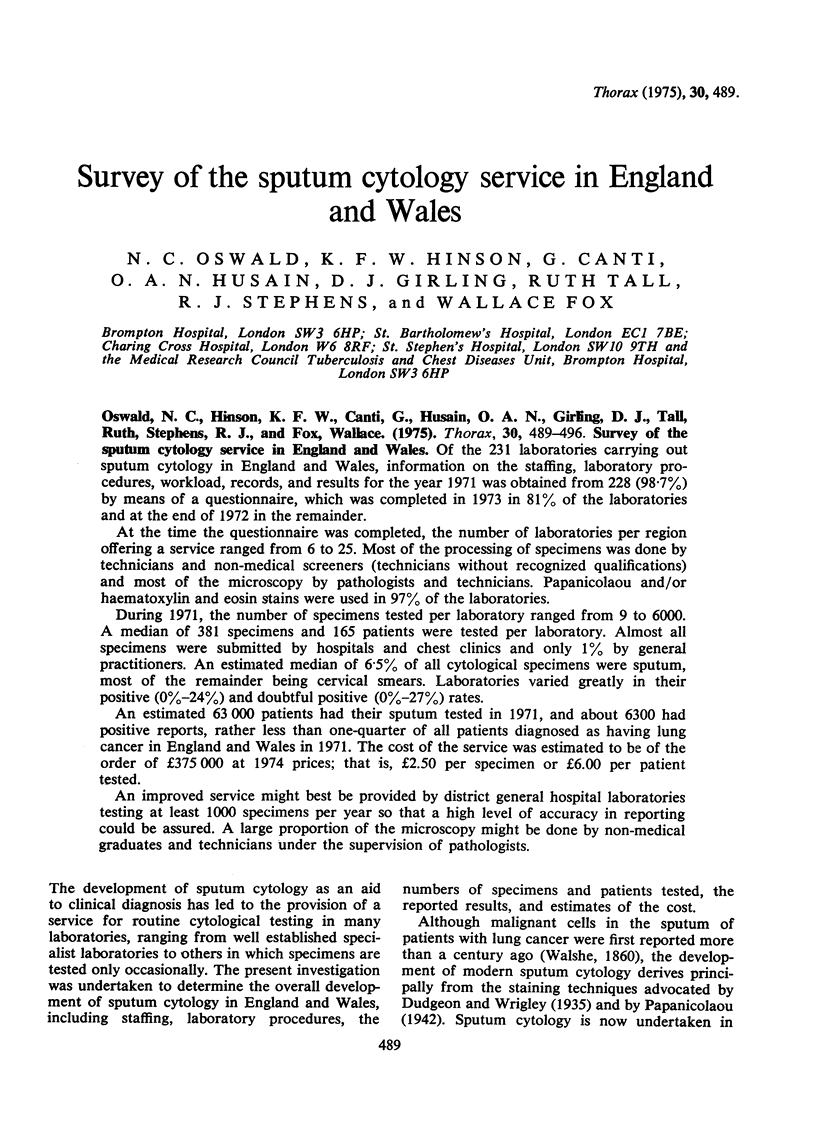
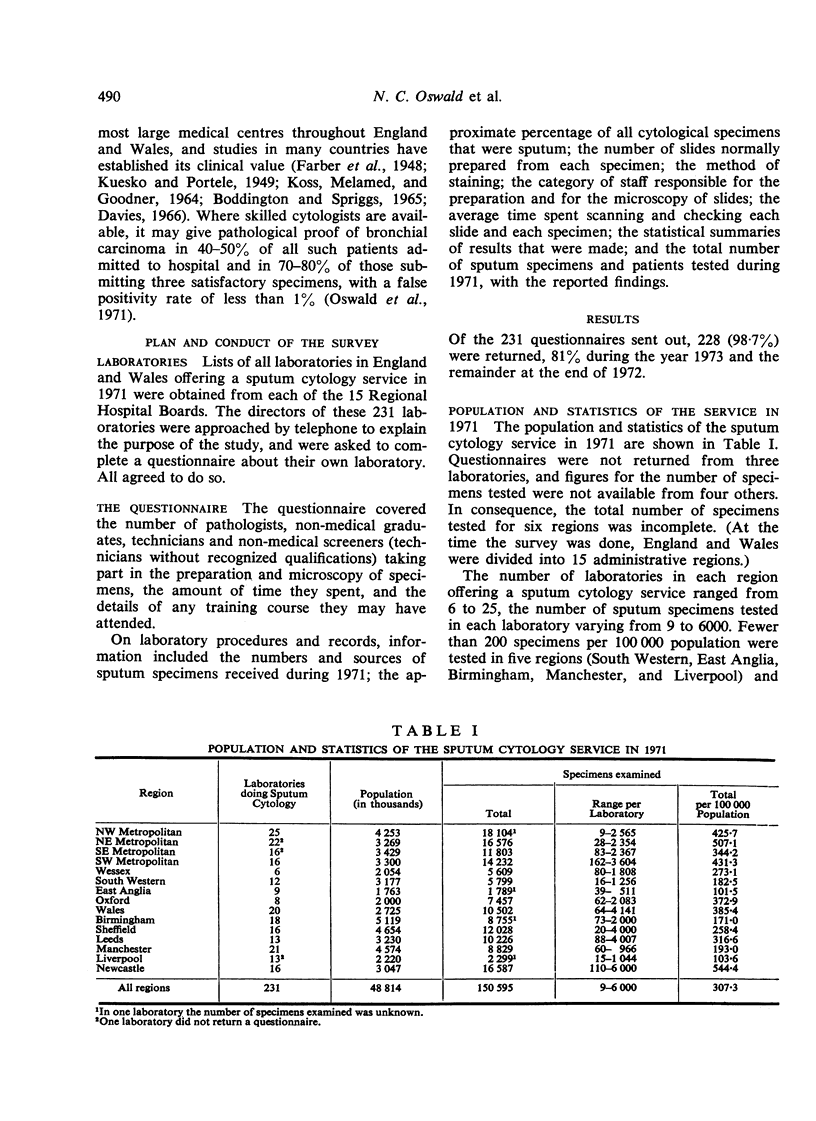
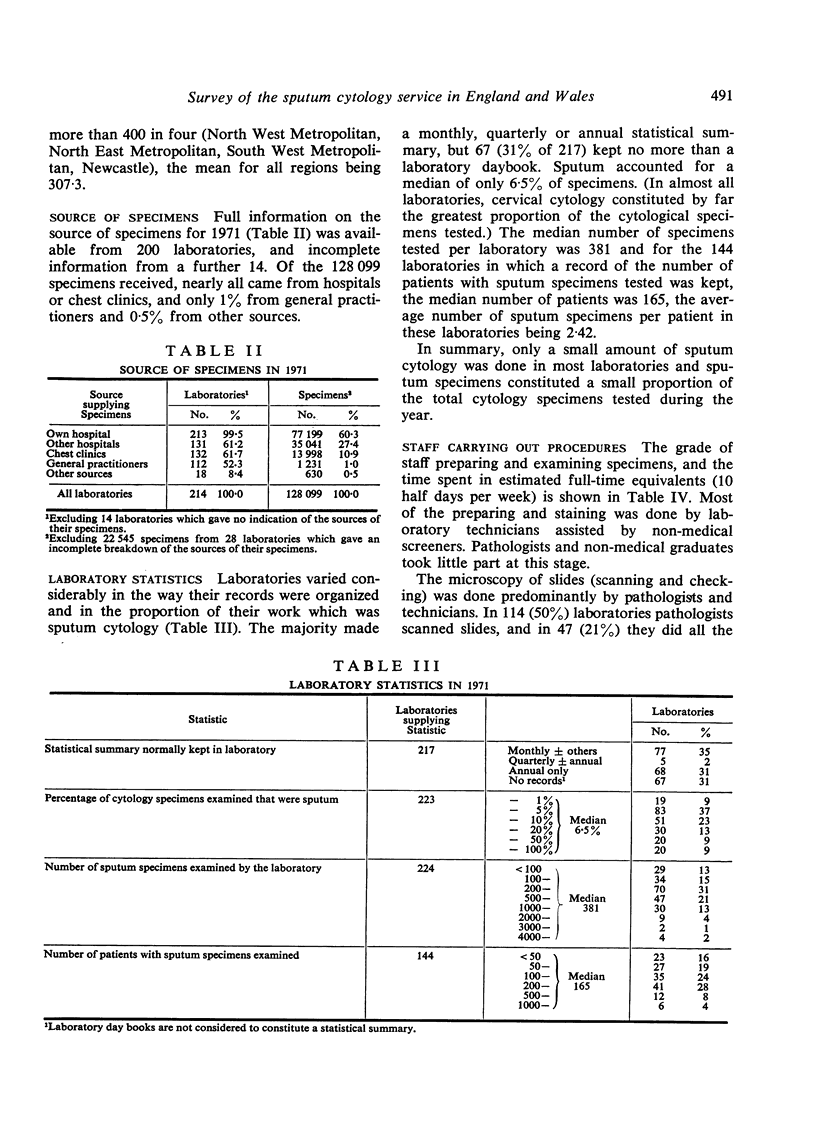

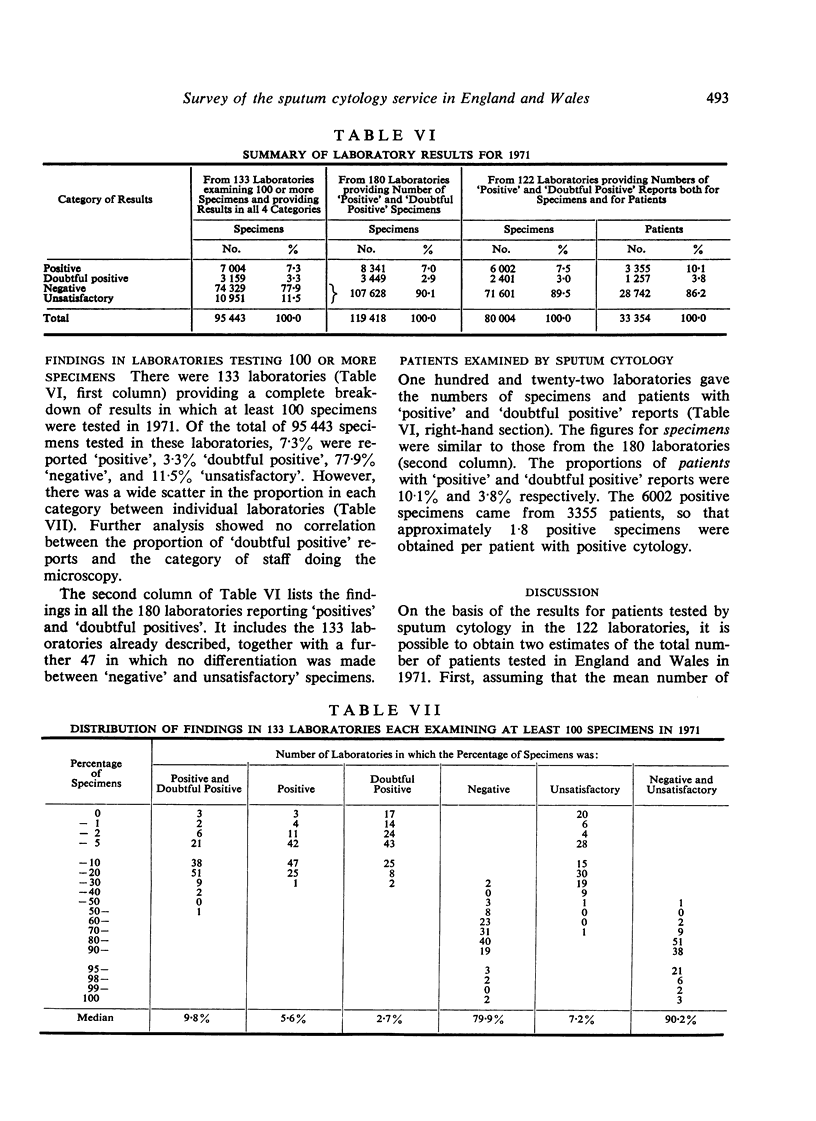
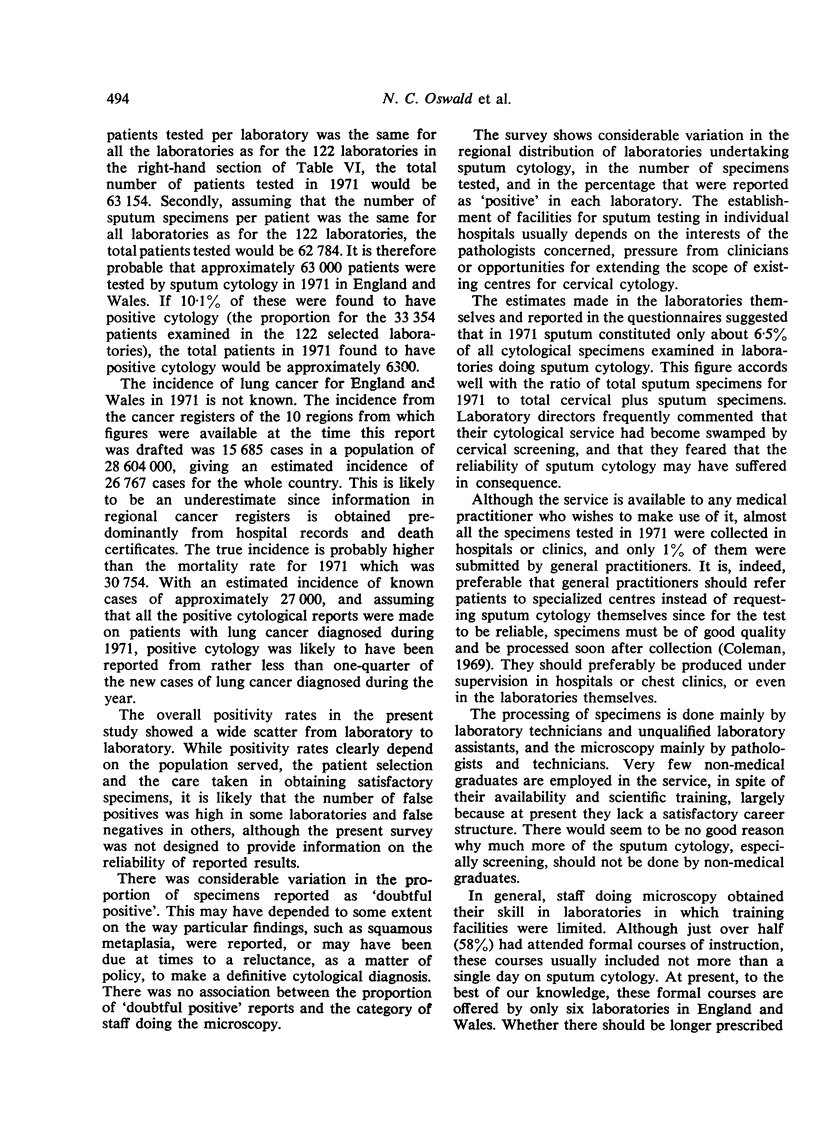
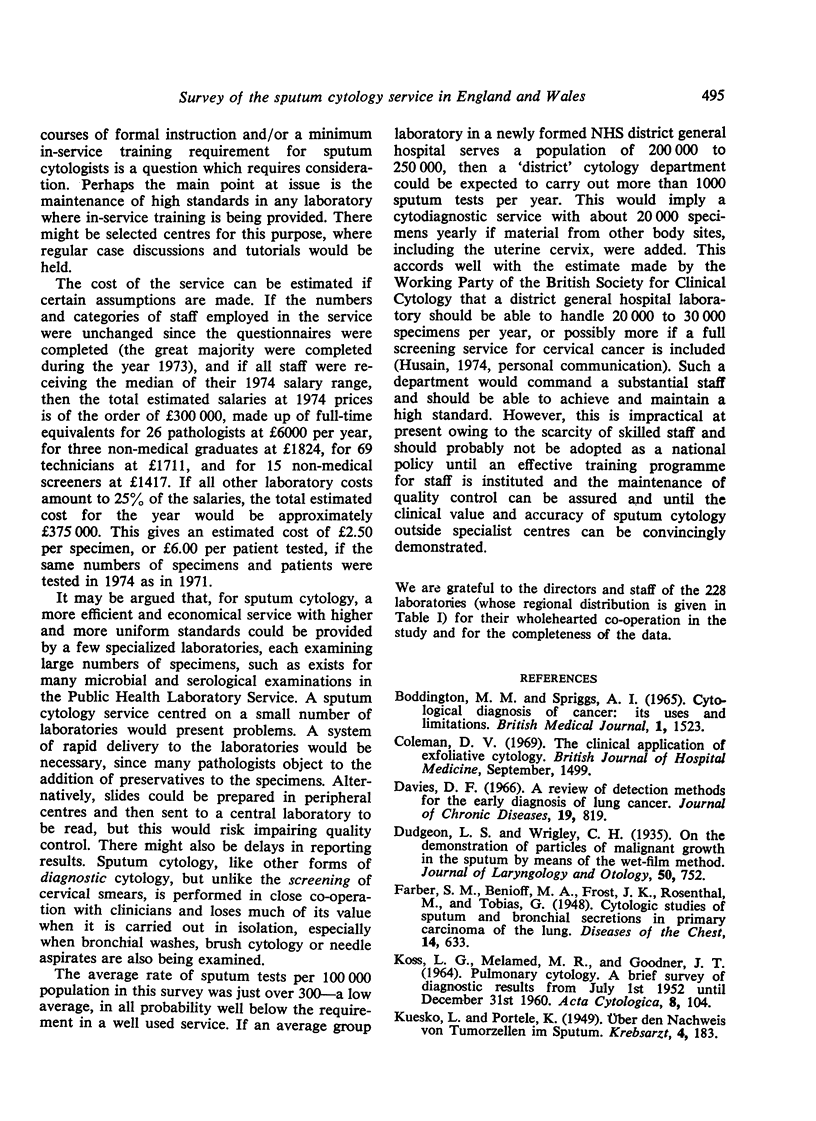
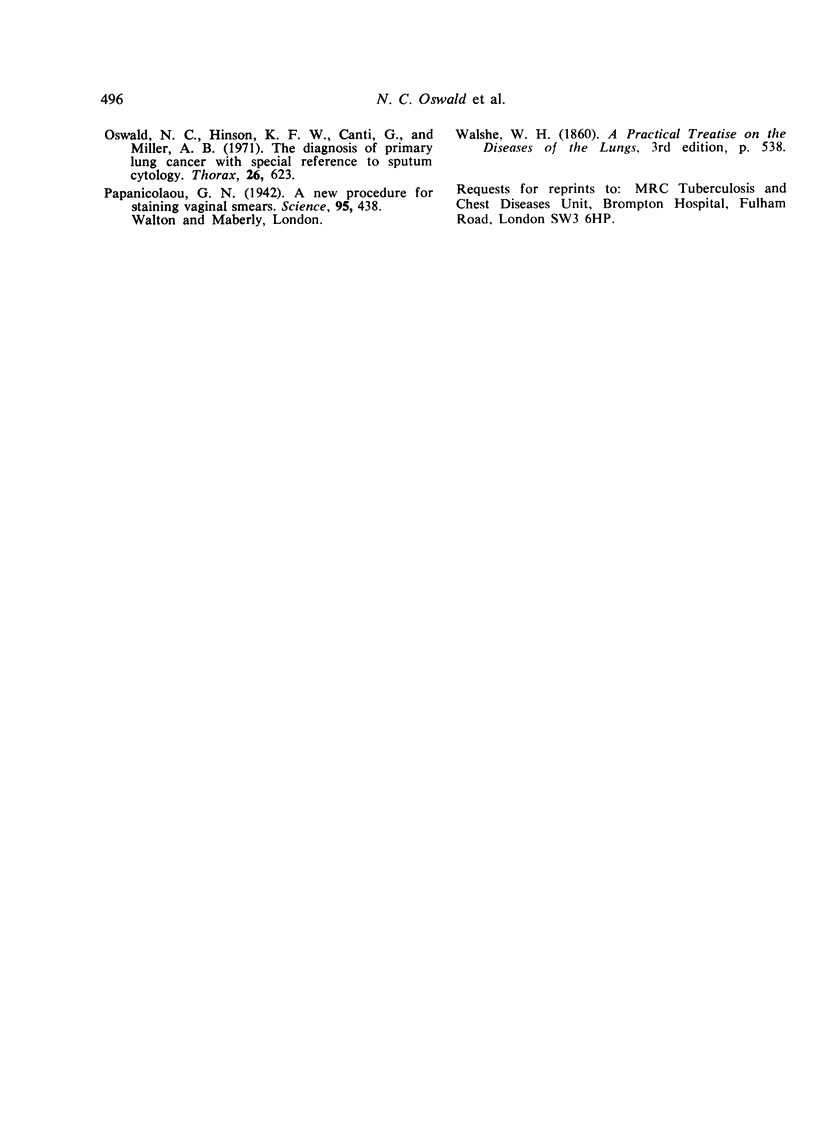
Selected References
These references are in PubMed. This may not be the complete list of references from this article.
- BODDINGTON M. M., SPRIGGS A. I. CYTOLOGICAL DIAGNOSIS OF CANCER: ITS USES AND LIMITATIONS. Br Med J. 1965 Jun 12;1(5449):1523–1529. doi: 10.1136/bmj.1.5449.1523. [DOI] [PMC free article] [PubMed] [Google Scholar]
- Davies D. F. A review of detection methods for the early diagnosis of lung cancer. J Chronic Dis. 1966 Aug;19(8):819–845. doi: 10.1016/0021-9681(66)90002-6. [DOI] [PubMed] [Google Scholar]
- KOSS L. G., MELAMED M. R., GOODNER J. T. PULMONARY CYTOLOGY--A BRIEF SURVEY OF DIAGNOSTIC RESULTS FROM JULY 1ST 1952 UNTIL DECEMBER 31ST, 1960. Acta Cytol. 1964 Mar-Apr;8:104–113. [PubMed] [Google Scholar]
- Oswald N. C., Hinson K. F., Canti G., Miller A. B. The diagnosis of primary lung cancer with special reference to sputum cytology. Thorax. 1971 Nov;26(6):623–627. doi: 10.1136/thx.26.6.623. [DOI] [PMC free article] [PubMed] [Google Scholar]
- Papanicolaou G. N. A NEW PROCEDURE FOR STAINING VAGINAL SMEARS. Science. 1942 Apr 24;95(2469):438–439. doi: 10.1126/science.95.2469.438. [DOI] [PubMed] [Google Scholar]


